Cetacea, the taxonomical infraorder that contains types of whales, including every species of whale in the world, is a diverse and fascinating group of majestic marine mammals. These incredible creatures never cease to amaze and inspire with their intelligence, beauty, and remarkable survival skills in the vastness of our oceans. There are over 90 species of cetaceans, each with its own unique set of characteristics. Whales come in all shapes and sizes, from the vaquita (Phocoena sinus), at 5 feet (1.5m) and 95 pounds (43 kg). to the blue whale (Balaenoptera musculus) at 110 feet (34 m) and 418,878 pounds (189 metric tons)! Some, like killer whales (Orcinus orca) and sperm whales (Physeter macrocephalus), have sharp teeth used for hunting. However, others like the bowhead whale (Balaena mysticetus) and the blue whale (Balaenoptera musculus), have evolved comb-like plates in their mouths that filter small organisms from the water.
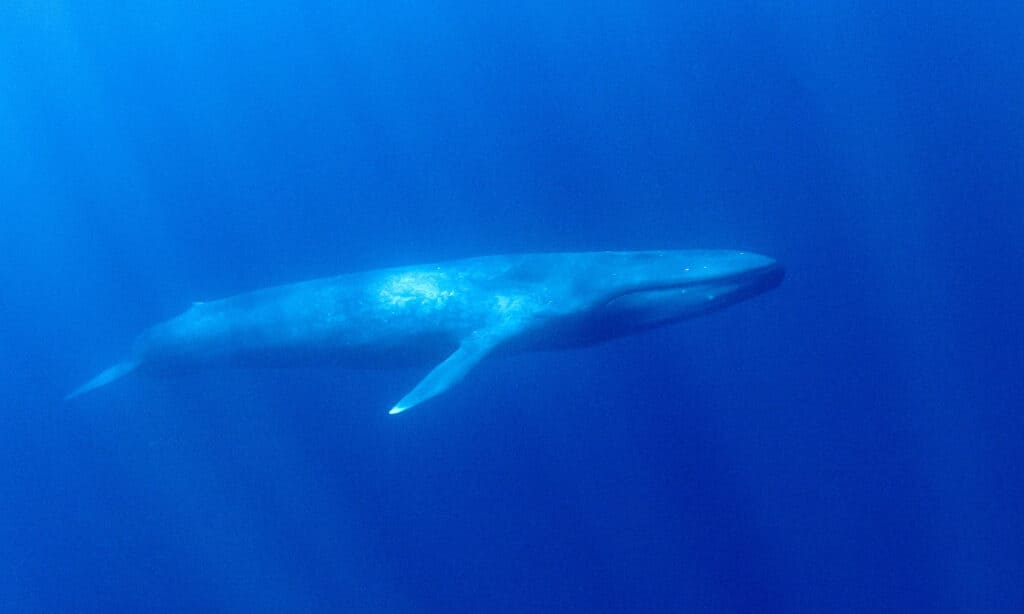
The blue whale (
Balaenoptera musculus) is the largest animal in the world!
©iStock.com/richcarey
Found in all of the world’s oceans and some of its rivers, cetaceans have adapted to various marine environments. The gray whale (Eschrichtius robustus) and the humpback whale (Megaptera novaeangliae) are recognized for their incredible migratory abilities. They can travel long distances each year between their breeding and feeding grounds.
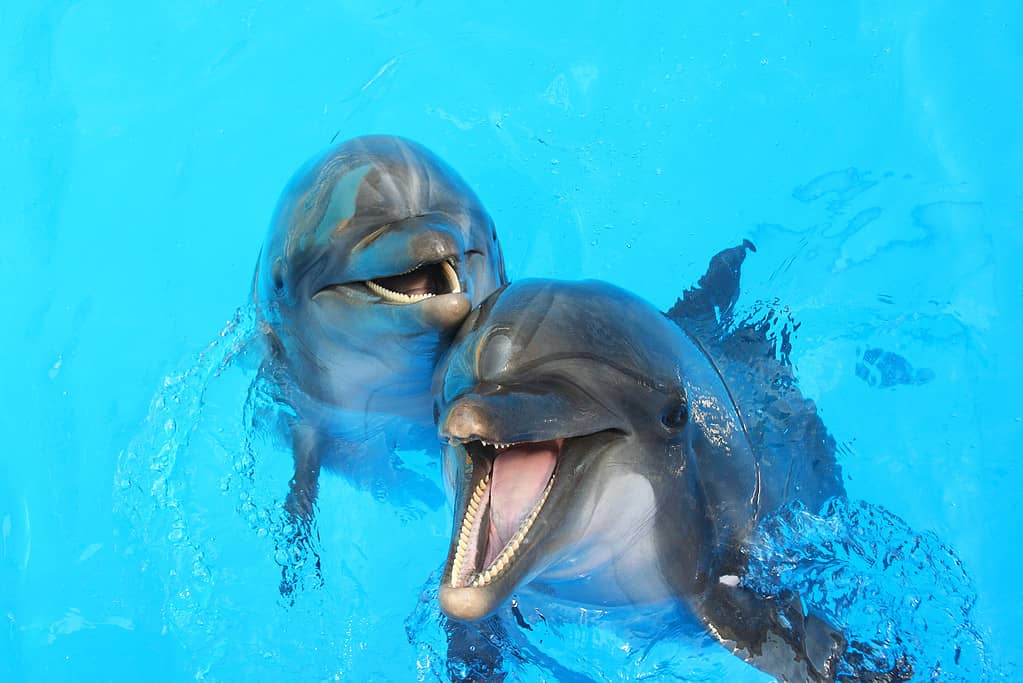
Not all toothed whales are dolphins and
porpoises
, but all dolphins and porpoises are toothed whales!
©Elena Larina/Shutterstock.com
Cetacea: Baleen Toothed Whales vs. Baleen Whales
The infraorder Cetacea is divided into two suborders: baleen whales (Mysticeti) and toothed whales (Odontoceti). It includes all dolphin and porpoise species. The key differences between these two groups are:
- Teeth vs. baleen plates: As their names suggest, toothed whales have teeth, while baleen whales have baleen plates in their mouths. Toothed whales use their teeth for hunting and also catching prey. Baleen whales use their baleen plates to filter small organisms, such as krill and plankton, from the water.
- One blowhole or two blowholes: Toothed whales have only one blowhole. Baleen whales have two blowholes, one for each of their lungs. This is one of the key anatomical differences between these two groups of cetaceans.
- Size and shape: Toothed whales tend to have a more streamlined body shape, and leap out of the water. Baleen whales are generally larger than toothed whales, with some species, such as the blue whale, being the largest animals on Earth.
- Social behavior: Toothed whales are more social than baleen whales, often traveling in large groups called pods. They also willfully interact with humans. Baleen whales often travel in smaller groups or alone.
- Echolocation: Toothed whales have a specialized organ in their forehead called the melon, which they use to produce and focus the sound waves for echolocation. Baleen whales do not use echolocation. Baleen whales do not have a melon. However, they do have a large and complex larynx that allows them to produce a wide range of sounds for communication.
- Diving behavior: Toothed whales tend to make longer, deeper dives than baleen whales. Toothed whales are capable of diving to extreme depths of 10,000 feet (3 kg) and staying underwater for over an hour.
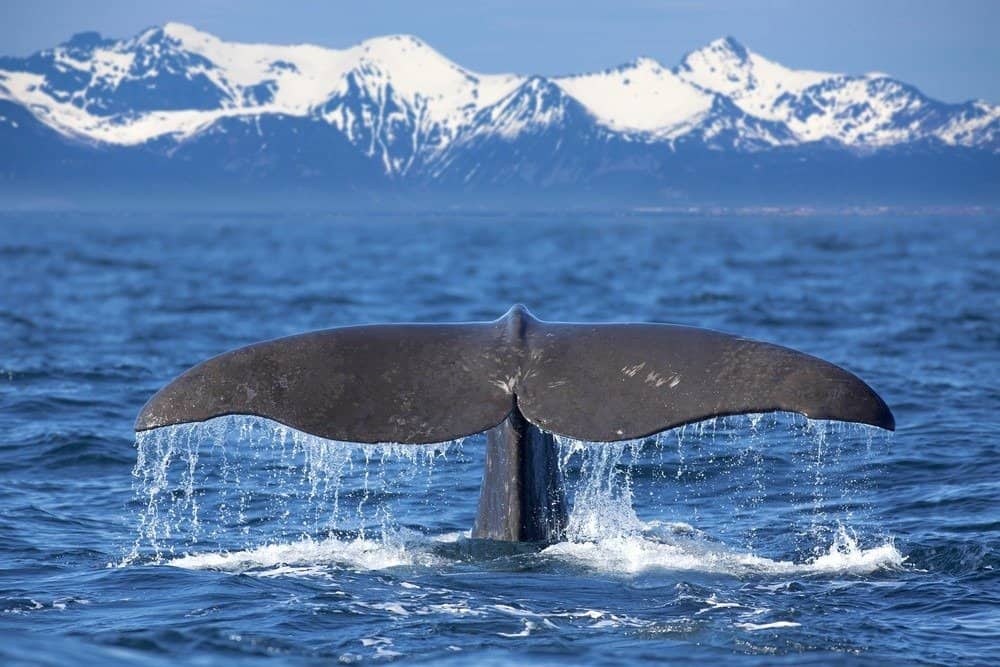
Whales (
Cetacea) are a group of marine mammals widely recognized for their size, intelligence, and beauty.
©Kjersti Joergensen/Shutterstock.com
Baleen Whales
Baleen whales (Mysticeti) are a group of marine mammals belonging to the order Cetacea. They are called baleen whales because instead of teeth, they have comb-like structures called baleen plates. They use their baleen plates to filter out tiny organisms, such as krill and plankton from the water as they feed. These whales are some of the largest animals on the planet. Adult individuals range from 33 feet (10 meters) to over 98 feet (30 meters) in length. To read about every species of baleen whale in the world, click here.
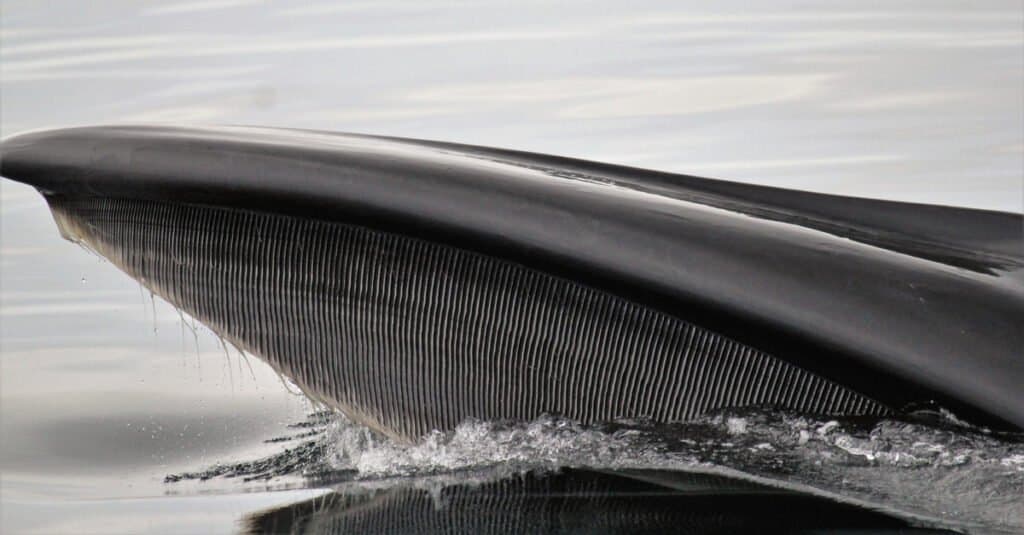
Baleen whales, like this blue whale, have hundreds of baleen plates on each side of their mouth, arranged in a row that can be up to several meters long.
©Sharlyn/Shutterstock.com
Toothed Whales
Toothed whales (Odontoceti) are a diverse group of marine mammals that belong to the Cetacean order. They are characterized by their distinctive teeth, which they use to hunt and catch prey. Toothed whales, including dolphins and porpoises, use echolocation to locate prey and navigate through their environment. Toothed whales are found in all of the world’s oceans, and some of its rivers. There are more than 70 different species of Odontoceti. Some of the most well-known species of toothed whales include dolphins, porpoises, and killer whales. Toothed whales are highly intelligent and social animals that live in complex family groups known as pods. For practicality’s sake, the suborder Odontoceti has been divided into every species of dolphin and porpoise in the world, and every species of toothed whale that is not a dolphin or a porpoise in the world.
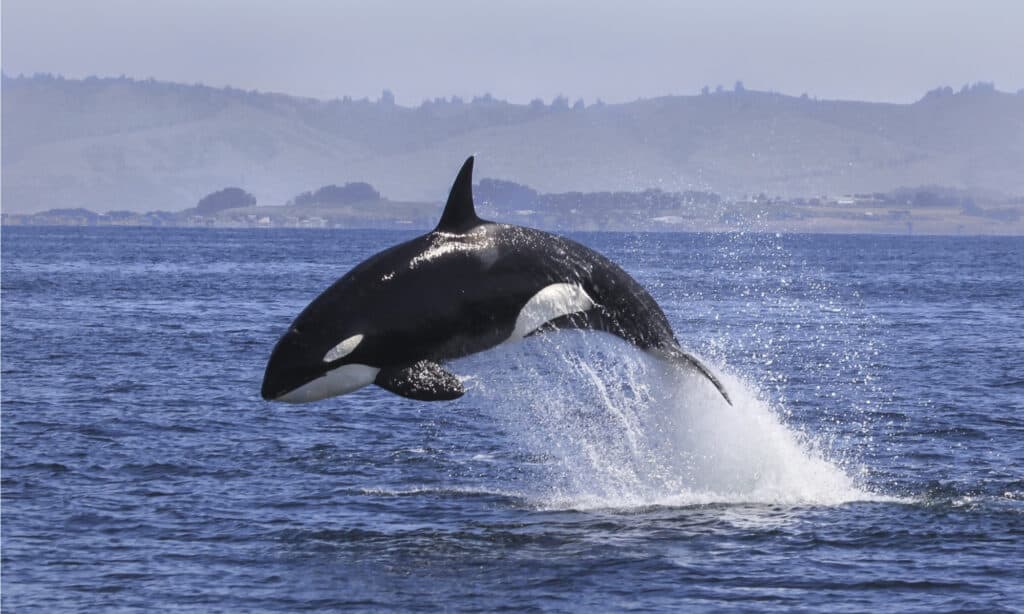
Orca, or Killer Whale (Orcinus orca) is actually classified as a
dolphin.
©Tory Kallman/Shutterstock.com
Types of Whales: Every Species of Whale in the World
Cetaceans are a group of marine mammals that includes baleen whales, toothed whales, dolphins, and porpoises. This group continues to captivate our imaginations with its splendor and mystery. These intelligent and highly social animals have evolved over millions of years. It thrives in some of the most extreme environments on Earth. From the haunting songs of humpback whales to the acrobatic displays of dolphins, cetaceans have inspired awe and wonder in humans for centuries. As we continue to explore and understand the world’s oceans, we can only hope to gain a deeper appreciation for the incredible diversity and beauty of these majestic animals.
The photo featured at the top of this post is © slowmotiongli/Shutterstock.com
Thank you for reading! Have some feedback for us? Contact the AZ Animals editorial team.






